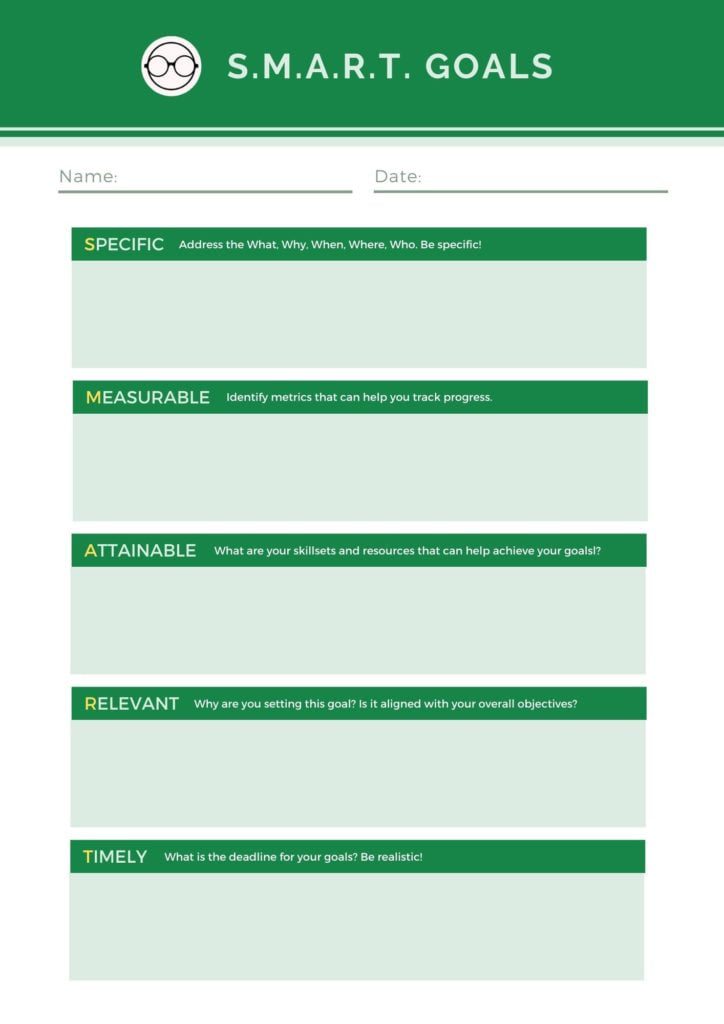This post may contain affiliate links. We may receive compensation when you click on links to those products at no additional cost to you. Read our full disclosure here.
In a previous post of this series, Investing Basics for Retirement Planning, we discussed the steps to build your financial foundation before investing. Now that your foundation is solid, it’s time to evaluate how to set investment goals. Everyone’s investment goals can vary based on the timeline, with the three most common being:
- Long-term (15 years or more)
- Retire by 60
- Meet out-of-pocket medical expenses
- Relocate to your dream country
- Mid-term (10-15 years)
- Sending kids to college
- Having a baby
- Relocation
- Short-term (5-10 years)
- Setting up an emergency fund
- Buy a car
- Get married
In this article, we’ll be focusing on how to set investment goals for retirement planning, which is more long-term focused.
Why Investment Goals Are Important
Learning how to set investment goals is important, as effective goals will:
- Serve as a map to help you stay the course and navigate through life events confidently.
- Serve as an accountability partner to ensure that you remain disciplined as you review your goals periodically.
- Serve as a cheerleader that motivates you to not give up and stay focused on what you’ve written down.
How to Set Investment Goals With SMART
I personally like to use the S.M.A.R.T. goals template to map out investment goals and objectives. It provides a solid and easy-to-follow framework to establish one’s goals. S.M.A.R.T. goals stand for Specific, Measurable, Attainable, Relevant, and Timely.
SPECIFIC
When setting up investment goals, aim to be as specific as possible and leave no room for ambiguity. A good way to be specific on your goals is to use the 5Ws – Who, What, When, Where, Why. For example, a specific goal would sound like this:
I (Who) plan to retire (what) at 55 years old (when) with a retirement after-tax income of $40,000 annually (what), in a beach house in Florida (where) to spend time with my family and enjoy the beach (why).
MEASURABLE
Next, your goals should be measurable. This means that you should be able to use quantifiable metrics to measure your goals. A good way to set measurable goals is also to ask how can you measure progress and know if you’ve successfully met your goal. For example:
- How much do you need to retire? Use this calculator to get a brief idea.
- How much do you need in your retirement portfolio to retire?
- A popular rule of thumb is to multiply your ideal retirement income by 25 to withdraw during retirement without running out of money.
- For example, if you think you’ll need a total of $80,000/year for retirement, and your social security and other income can provide $30,000/year in retirement, you’ll need $50,000/year from your portfolio to reach your income goal.
- This means that you’ll need $1.25M in your portfolio to retire and achieve your income goal.
- How much do you need to save monthly to achieve that goal?
- What is the rate of return on your investments you need to reach that goal?
- How close are you to meeting your goal?
ATTAINABLE
It is great to be ambitious and set lofty goals as motivation to achieve them. However, it is important to make sure that your goals are attainable and realistic. Would being the richest man in the world be a nice goal to have? Sure. Is it attainable? Probably not. However, setting a goal of saving 20% of your income every year is much more attainable and can serve as a stepping stone to other goals.
To determine whether a goal is achievable would require due diligence as everyone’s financial situation is different. This means knowing your financial situation, timeline, risk tolerance, as well as expected returns will help you draft goals that are realistic and achievable. For example, having a realistic expectation of your investment returns is important to guide how much you’ll need to invest annually.
RELEVANT
Relevant goals are goals that apply to you and your overall goals and objectives. This is important as you may come up with a bunch of investment goals like retiring early, moving overseas, or even buying a yacht. However, which of those goals are relevant to you and your family’s situation?
For example, buying a yacht may be an interesting investment goal but may not be relevant to your family’s overall goals and objectives during retirement. Having relevant investment goals will help you stay focused on what’s important.
TIMELY
One of the most important aspects of an effective goal is having a defined timeline. Some timely investment goals are:
- When do you want to retire?
- How much do you want to have saved by 20, 30, 40, 50, 60, and so on.
- How long will it take to achieve those goals?
- When do you want to set up specific retirement/investment accounts? (Roth IRA, IRA, HSA, 529 plans for children)
To break it down further to more actionable items, you can break your investment goals into shorter timeframes. For example, what are the things you can do in the next 3 years, 12 months, 6 months, 3 months, 1 month, and even 1 week to get you one step closer to achieving your goals? Perhaps eating out only on the weekends, reading investment education books, or investing $100/week into a brokerage account like Webull.
Summary
It is important to learn how to set investment goals. Using the S.M.A.R.T. goals template will help you create specific, measurable, attainable, relevant, and timely goals that will help you map out your goals and keep you on track to achieve financial freedom. An example of a good SMART goal of an investor can be, “I want to have $2 million in assets and retire by the time I’m 60. To do this, I’ll save 10% of my income by contributing $500 to my 401(k) and $500 to my IRA each month and manage my investments to achieve an annual 7% rate of return after taxes.”
Feel free to use the template below to get started in drafting your investment goals.

The opinions expressed in this article are for general information purposes only and are not intended to provide specific advice or recommendations about any investment product or security. If you have questions pertaining to your individual situation you should consult your financial advisor.
This post may contain affiliate links. We may receive compensation when you click on links to those products at no additional cost to you. Read our full disclosure here.






